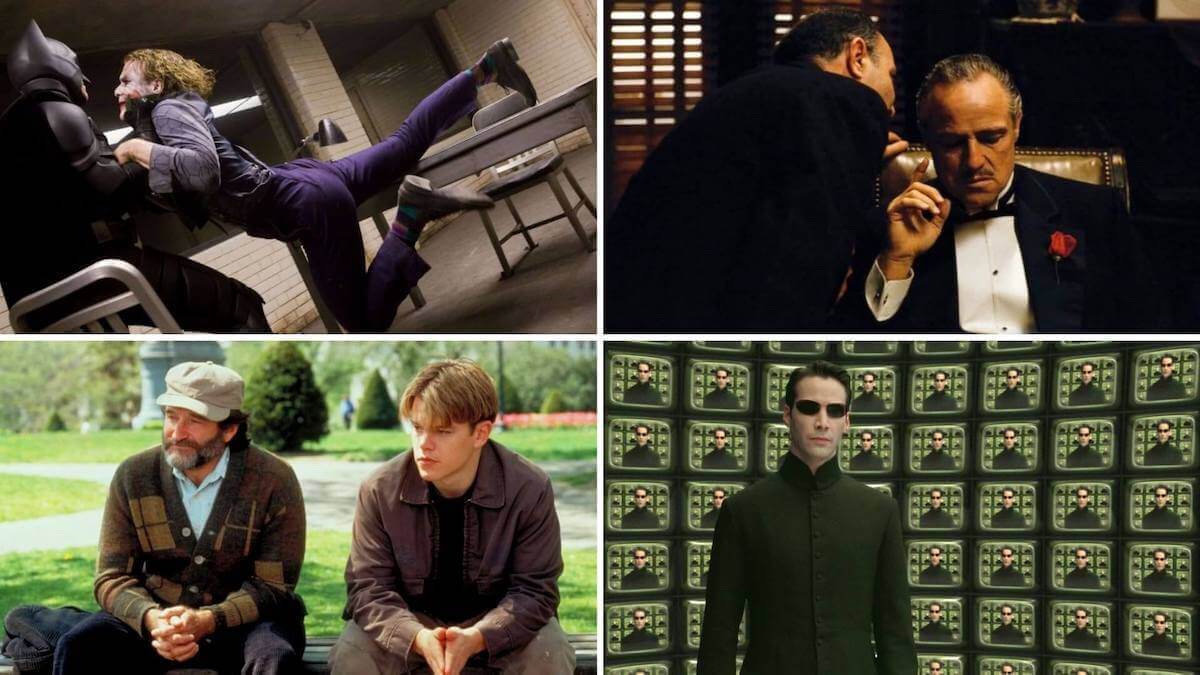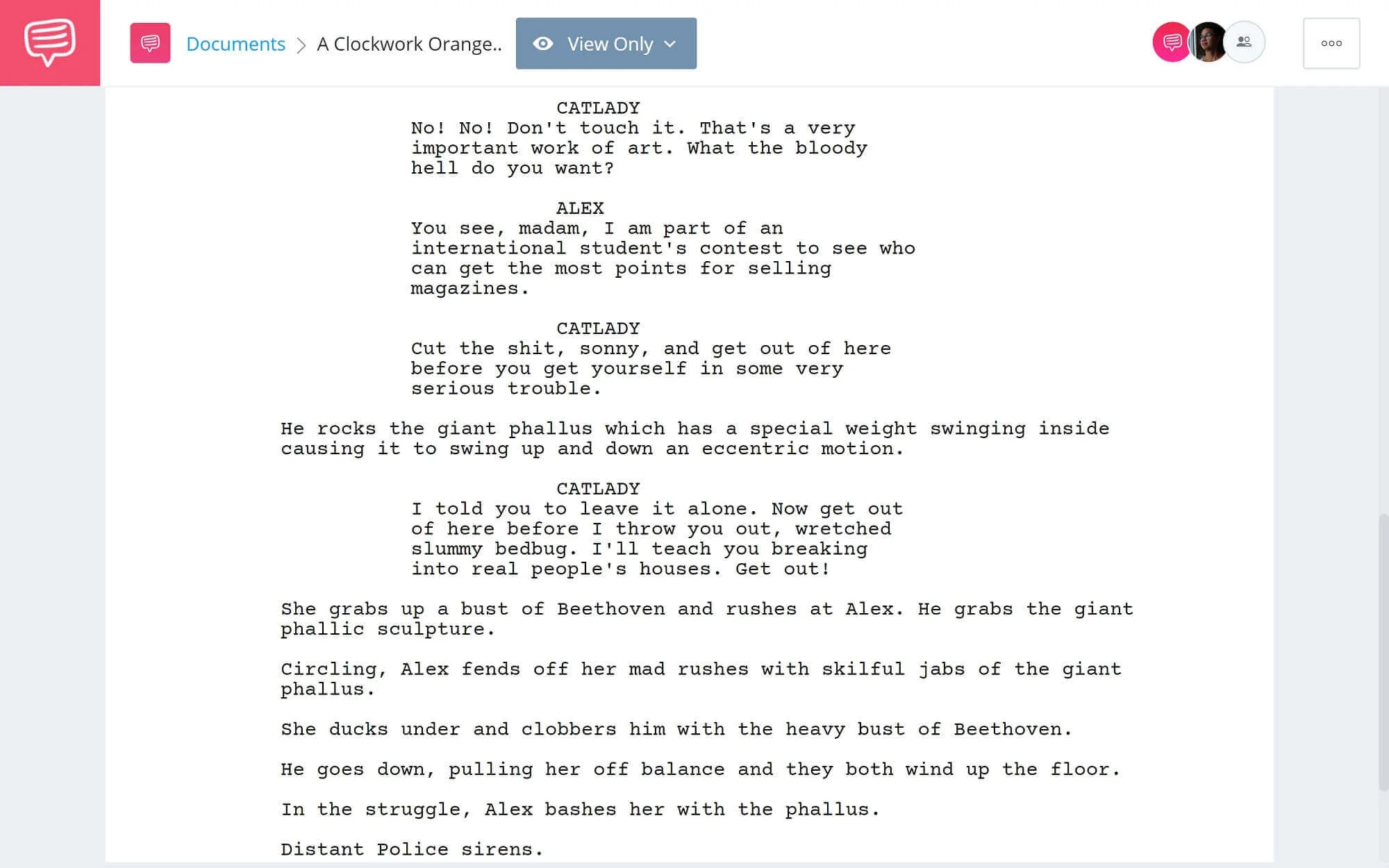What is theme? In the simplest terms, a theme is the subject of a story. But that definition actually does more harm than good in fully understanding the theme of a story. In this article, we’re going to look at some common misconceptions by breaking down how to use theme in literature and screenwriting, with examples from Lost, A Clockwork Orange, and more. But before we jump into some theme examples, let’s start with a theme definition.
Theme in Film
How to define theme in literature & film
Themes can be communicated in cinema in two ways: auditorily and visually. They can be blended into both categories, or expounded upon in either sense. In literature, themes are restricted to the page. But before we dive too deep into the intricacies of how themes are uniquely used in the film, let’s start with a theme definition.
THEME DEFINITION
What is theme?
A theme is the inferred stance taken on the central topic or message of a story. Think love for example: love may be the topic, but learning to love yourself may be the theme. Themes are used to communicate important ideas and messages about issues that face the characters and the setting of a narrative. Everything that happens within a story should reference back to a theme.
What does theme mean in literature and film:
- A theme is what the story is truly about at its core
- It is often the lesson or moral we are meant to take away from this particular story
- Plot and narrative are vehicles that drive the reader or viewer to the theme in a story
- In some cases, there are major themes and minor themes combined to inform and support each other
Articulating themes can be a little tricky. That’s largely due to how broadly we generalize the term “theme” in everyday conversation. Love, war, death, isolation, etc., these are not themes — they’re topics. Many, myself included, fall into the trap of conceptualizing these ideas into themes without considering what the point of their use could be.
A theme isn't complete unless it actually says something or takes a position about the topic. That's why identifying "love" as a theme doesn't really help us understand what we are meant to take away from the story. "Love is blind" or "love is all you need" are themes that make a clear argument about the topic and, therefore, help us to process, interpret and understand the story on a deeper level.
This next video does a great job of simply explaining the difference between “topic” and “theme” in Romeo and Juliet.What is Theme? • How to Define Theme in Literature
Here, the video essayist aptly says that love and fate are two central topics of Romeo and Juliet, then suggests that the story’s major theme is that "fate conquers love." Of all the themes in literature, this is perhaps the most iconic.
We’re going to focus on how themes are used in the cinema though. Here’s a quick breakdown of how to differentiate topics and themes in popular films:
Example: Beauty and the Beast
- Topic: Vanity
- Theme: True beauty is on the inside not out
Example: Good Will Hunting
- Topic: Friendship
- Theme: Friends help each other grow
Now let’s do a quick example of a film’s major and minor themes.
Example: The Godfather
- Major Theme: Power consumes the powerless
- Minor Theme: Family is the most important thing in the world
Oftentimes, major and minor themes clash. In The Godfather: Part II, we see how the minor theme of family loyalty is destroyed by the indomitable major theme of all-consuming power. This creates drama and nuance in the story.
Major Theme Examples
How are major themes used?
One of the most enduring themes of all-time is the battle between reason vs. faith. Perhaps the most obvious example of this thematic conflict put to use in television is John Locke vs. Jack Sheppard in Lost.
Jack represents scientific reason. Locke represents actionable faith.
This moral difference causes conflict between the two characters. Not just any type of conflict though, thematic conflict — something that digs far deeper than physical confrontations and connects to the central topic of the series. It is also a battle between internal and external conflict.
Let’s take a look at a clip from the first season of Lost to see how this conflict materializes.
Theme Examples • Lost: Science vs. Faith
How is the theme of reason vs. faith communicated to us in this scene? In truth, it’s done in a variety of ways, some conceptual, some visual. Characters, plot, production design, and dialogue all play a role in getting across the point of the topic.
Let’s break down the major aspects of the scene to see how it works:
Characters
Jack is young, energetic, but scattered. Locke is older, reserved, but purposeful. Then, of course, there’s the implications of subtext in Locke’s name suggesting an added referential layer to the philosophy of John Locke’s teachings on empiricism and faith.
Props
What do the props say about the scene? I’d say that they help communicate a sense of tribalism or primalism.
Plot
Jack suggests Locke is crazy for his faith. Locke suggests Jack is crazy for lacking faith.
Throughout the show, the topic of reason vs. faith plays a central role in pushing the story forward. In the end, a definitive stance is taken on the topic, which results in an impactful theme.
Minor Theme Examples
How are minor themes used?
If you’re looking to learn more about how themes are communicated in film, you have to watch Stanley Kubrick’s A Clockwork Orange. Everything in the film points back to the topics of the story, such as conformity, chaos, sexuality, repentance, good vs. evil, etc.
I’d say that the central theme of A Clockwork Orange is the inescapability of conformity. We see this theme communicated throughout the film in wardrobe, props, and plot. But what are the other types of themes? Well, if the topic they’re commenting on isn’t central to the story, then they may be referred to as minor.
One of the more unique minor topics of the film is sexuality. Let’s take a look at a scene from the script for A Clockwork Orange to see how Stanley Kubrick built a sexual theme.
Minor Theme Examples • A Clockwork Orange • Read Full Scene
What can we infer from this scene? Well for starters, we can certainly say that there’s something purposeful about Kubrick’s choice of props. A sword fight involving a Beethoven bust and a phallic statue is certainly something you don’t see every day — hopefully ever. So what’s the point of writing in these uber-specific props? I’d ponder that the props are meant to establish the theme of carnal, masculine domination.
Now let’s take a look at this scene from the film:
What is Theme? • A Clockwork Orange
When the events of the script are put into action, we see how this conflict is communicated in a strictly visual sense. In addition to the statues, there are paintings of nude women that adorn the walls. It’s clear that this is a setting of overt sexuality.
So what happens when our protagonist Alex, a representative for violent, criminal sexuality, meets with this Cat Lady in her brash, feminine sanctuary. He quite literally bludgeons her with a penis, so as to say that he uses his manhood to destroy her. This creates an unforgettable theme of “male domination.”
Theme Meaning
What is the theme of Schindler's List?
Cinema is a unique medium because it offers something that would be impossible to do in literature — the ability to tell a story with visuals and audio. For filmmakers, there’s a near-endless spectrum of tools available to convey theme meaning in unique and exciting ways.
Again, remember that themes aren’t outwardly defined, they’re planted by a writer/director then inferred by the audience through the plot, dialogue, and production design.
One great theme that’s communicated solely through filmmaking tactics is that of senseless tragedy; implied by the girl in red in Schindler’s List.
Let’s take a look at how director Steven Spielberg uses color in costuming, character detail, audio, and plot to establish a topic, then communicate its tragedy.
Theme Examples in Film • Schindler’s List
Everything Spielberg does in this sequence is purposeful, from framing to audio to color grading. So, what’s the topic? There’s clearly an overarching sense of death and mortality. But I’d say that the major point of the scene is more acutely about the loss of innocence and the reflection of Oskar Schindler’s (Liam Neeson) own guilt.
How do we infer that this scene may be about the loss of innocence though? Well, it starts with all the aspects of filmmaking that we alluded to earlier. Spielberg uses music to swell our emotions, then uses the sound of gunfire to juxtapose it.
Visually, he highlights a young girl in a red coat, who is just one of the many victims of this horrid picture. In this next video, we take a look at how Spielberg uses eye trace and framing to guide our attention to her.
Schindler’s List • Eye Trace Example
When filmmaking tactics meet a sharp script that’s layered with subtext and theme, a masterpiece is created.
Later in the film, Spielberg ties a bow on the theme of the loss of innocence. In this next scene, we see that Schindler breaks down in remorse over the fact that he could have saved more victims.
What is the Theme of a Story? • Schindler’s List
How is this resolution communicated? Through all the aspects of film production: plot, dialogue, props, etc. Many have suggested that when Schindler says that his Nazi pin could’ve saved “one more person” he’s actually referencing the girl in red who Spielberg highlighted earlier. A theme should be incorporated throughout a story from start to finish. Perhaps no movie does a better job of incorporating themes than Schindler’s List.
UP NEXT
How to use conflict in a story
At the core of every story is some sort of conflict, whether internal or external. And no theme could be effectively communicated without conflict — evident by our examples from A Clockwork Orange and LOST. In this next article, we break down conflict in further detail, with a clear definition and video examples.

